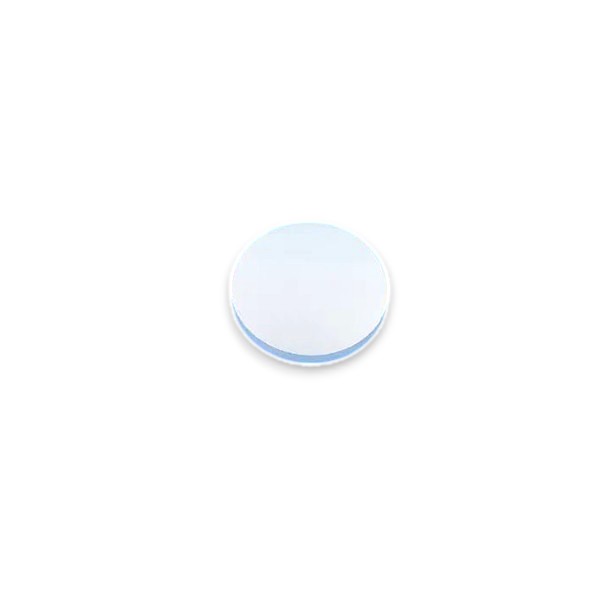

750nm Interference Filter FWHM 8nm
750nm Interference Filter FWHM 8nm is an optical narrow bandpass filter to transmit centered 750nm and half bandwidth 8nm. Coligh manufactures EUV to 30000nm interference filter
- Center wavelength 750nm
- FWHM 8nm
- Transmission peak ≥75%
- Blocking depth OD5
Products Categories
Get A Free Quote
750nm Optical Narrow Band Interference Filter FWHM 8nm Description
750/8nm Interference filter is designed to transmit a nrrow band of wavelengths centered around 750nm near infrared region with a bandwidth of 8nm at the 50% of the maximum transmission.
- Central wavelength 750+/-2nm, half bandwidth 8+/-2nm, can meet the wavelength matching requirements of high-precision optical systems while
- High transmittance in the range of 746-754nm, transmittance greater than or equal to 75%, retaining the effective light signal intensity to the greatest extent.
- Outside passband cutoff depth OD5 in the range of 200-1100nm, has excellent cutoff capability for stray light in visible light and other infrared bands, and can reduce background noise interference.
750nm Interference Filter FWHM 8nm Technical Datasheet
| Parameter | Specification |
| Center Wavelength | 750nm ± 2 nm |
| FWHM | 8 nm ± 2 nm |
| Peak Transmission | ≥ 75% |
| Blocking Range | 200–1100 nm |
| Blocking Depth | OD5 |
| Substrate Material | UV Fused Silica, K9, B270 |
| Surface Quality | 80-50, 60-40,40-20 (MIL-PRF-13830B) |
| Clear Aperture | ≥ 90% of the filter diameter |
| Filter Dimensions | φ12mm,φ15mm,φ25.4mm or custom |
| Angle of Incidence | 0° +/-5° |
| Coating Type | Hard-coated |
| Durability | MIL-STD-810E compliant, Method507.3 |
| Other similar FWHM availiable | 282/8nm, 340/8nm, 405/8nm, 450/8nm, 480/8nm, 492/8nm, 505/8nm, 510/8nm, 546/8nm, 578/8nm, 620/8nm, 630/8nm, 670/8nm, 700/10nm, 750/10nm, 760/10nm |
750nm Interference Filter FWHM 8nm Applications
- Cy7 fluorescence imaging
In Cy7 fluorescence labeling imaging, the emission wavelength of Cy7 is 750nm, which is widely used in in vivo imaging because of its strong penetration and low background interference. However, the spontaneous fluorescence of biological tissues or stray light from other light sources can seriously interfere with the target signal. Weak fluorescence signals are easily submerged by noise, resulting in low imaging contrast and poor signal-to-noise ratio. The 750/8nm bandpass filter matches the 750nm center wavelength with the Cy7 dye emission peak, and the 8nm narrowband ensures that only the target fluorescence is transmitted, which can filter out stray light below 730nm and above 770nm. High-contrast imaging helps in vivo tumor tracking or deep tissue observation, and improves the accuracy of pathological diagnosis. - Blood oxygen saturation monitoring
Hemoglobin has a characteristic absorption peak near 750nm, which can be used for non-invasive blood oxygen monitoring or brain oxygen metabolism analysis. However, the ambient light in the room and the absorption of other biological molecules will interfere with the detection accuracy. The 750/8nm narrowband filter can accurately match the hemoglobin absorption peak and exclude interference signals of other wavelengths. - Methane detection
Methane has characteristic absorption lines near 750nm in the near infrared, but gas detection is susceptible to cross-interference from other components such as water vapor and CO₂. In addition, in a multi-gas mixed environment, traditional wide-spectrum sensors cannot distinguish specific gas concentrations. The 750nm narrow band of the 750/8nm optical filter only covers the methane absorption peak to avoid interference from other gases. - Elisa
In the microplate reader, TMB color development and alkaline phosphatase substrate have characteristic absorption peaks near 750nm, but the wide spectrum output of the instrument light source will introduce background noise. In addition, wide-spectrum detection causes absorbance readings to drift, affecting the linearity and repeatability of the standard curve. The 750/8nm filter can replace the wide-band filter in the traditional filter wheel, using 750nm±4nm narrow-band light as the detection light source to avoid multi-wavelength crosstalk. Ensure stable OD value readings in ELISA experiments


